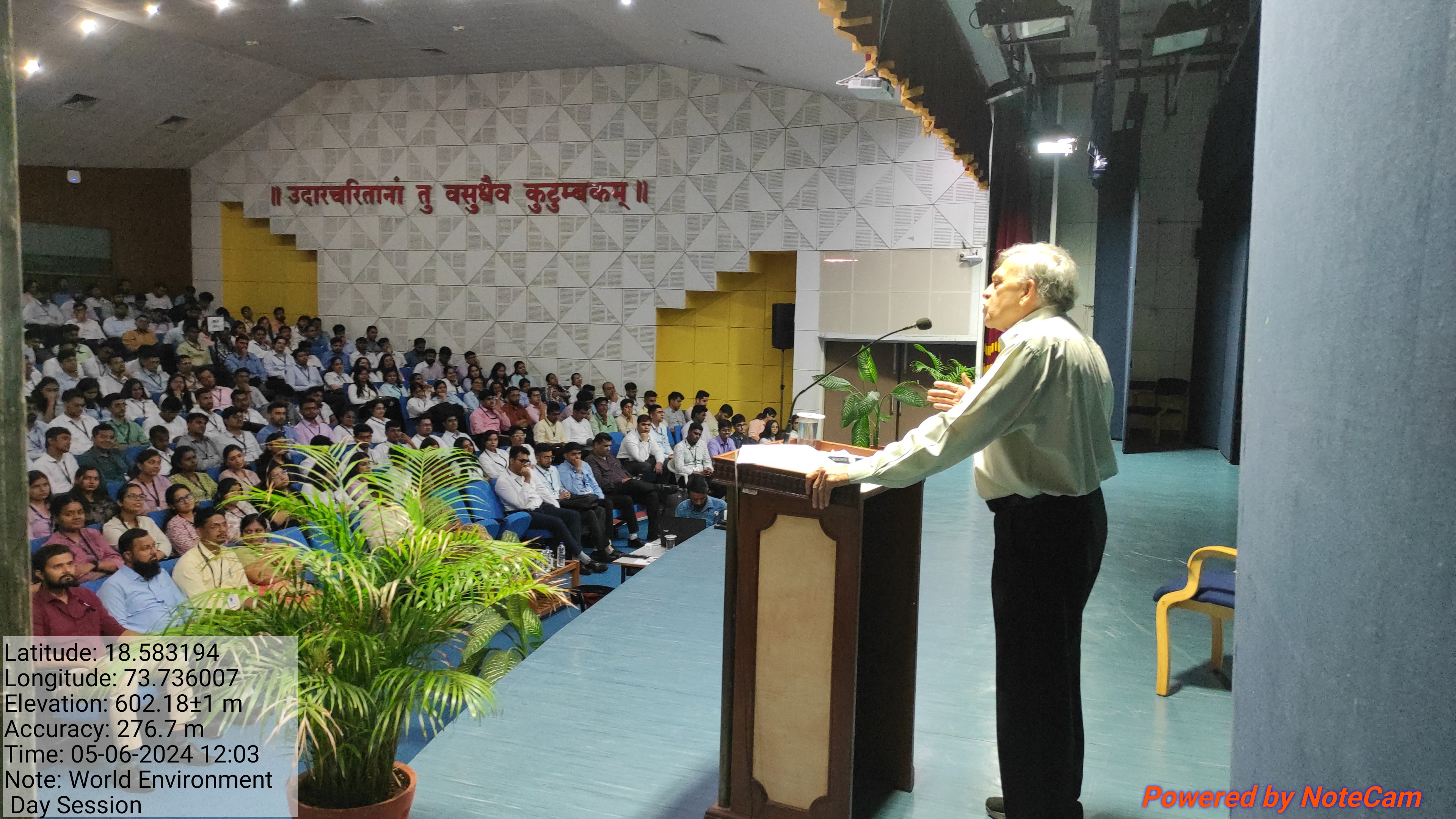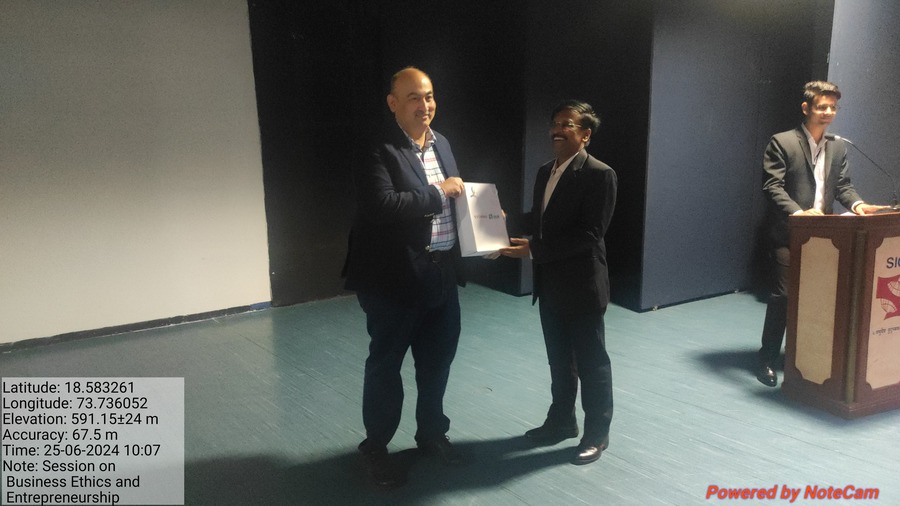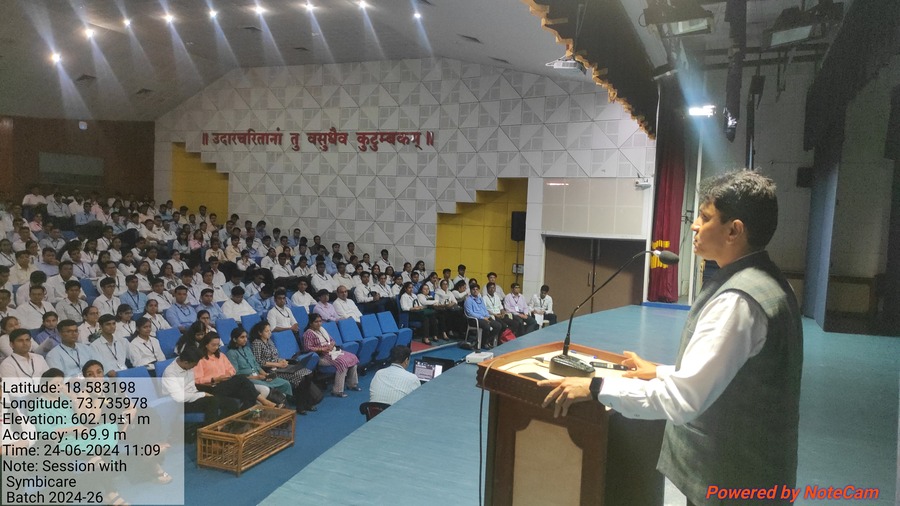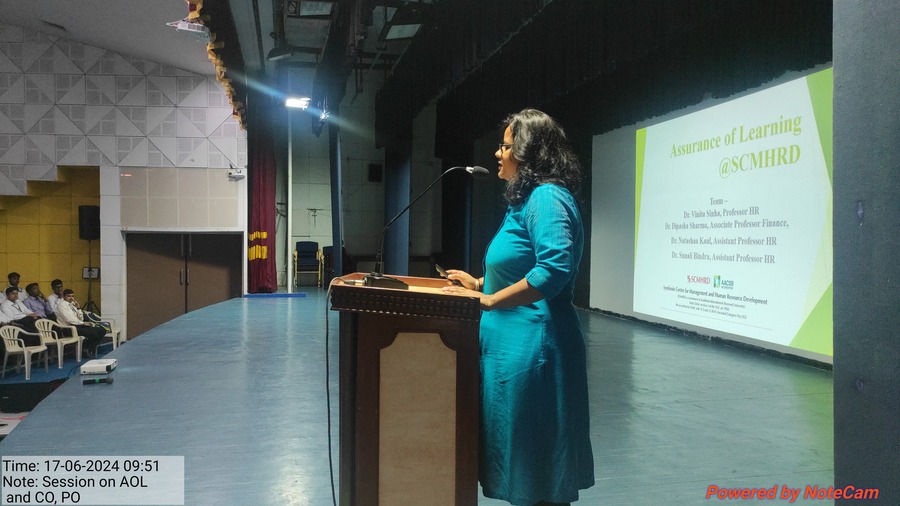
Session on Role of Youth in Preserving the Environment
- 2024-06-05
- Prof Vijay Paranjapye
The induction week for the incoming MBA cohort of 2024-2026 at SCMHRD Pune commenced with an inspiring session by Prof. Vijay Paranjpye, an honored environmental economist who once served as the honorary secretary at WWF India, Pune branch. On the occasion of World Environment Day, Prof. Paranjpye, a passionate environmentalist, shared his thoughts on the role of youth in preserving the environment.
His presentation intriguingly began with the image of the Blue Marble, a photograph of Earth taken on December 7th, 1972, from a distance of about 29,400 km by the crew of Apollo 17. Using this as a backdrop, he highlighted that while the environment is a vast topic, he would focus specifically on droughts and desertification. He pointed out that approximately 36% of Indian lands are drought-prone and provided historical examples of human misuse of resources, emphasizing the inverse relationship between population growth and resource availability.
He went on to add that following the World Wars, the need for environmental conservation led to initiatives like the Green Revolution. Although it resulted in a surplus of food grains for about 20 years, it caused more harm than good by using broad-spectrum fertilizers that killed vital soil biomes. He mentioned this as being highlighted in Rachel Carson's book "Silent Spring," which had a profound impact globally and led to the Stockholm Convention in 1972, the first international conference focused on environmental conservation rather than world peace.
After discussing the global impact and ramifications of the Green Revolution he went on to speak about India, while the Green Revolution was initially successful here, it caused severe droughts and floods in the long run. He spoke about how it led to government measures like the Forest Conservation Act and said that without comprehensive, integrated development strategies, these issues persisted. Prof. Paranjpye stressed that the resolution should have included support for populations living on degraded lands. He cited the hardships faced by the various tribal communities and how addressing these could contribute to environmental conservation. Examples included environmentalists like 16-year-old Ridhima Pandey and 50-year-old Sunderlal Bahuguna of the Chipko Movement, emphasizing that sensitivity to environmental issues is not limited by age.
He concluded by offering practical suggestions for individual contributions to environmental conservation like cycling and not using plastic containers. He encouraged simple changes in daily life that everyone can adopt to help preserve the environment.



 .
..webp
)
.webp)


